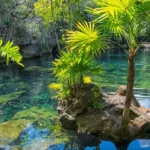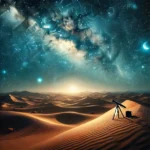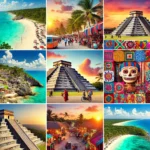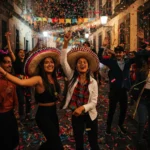Machu Picchu, the iconic 15th-century Inca citadel located in the Eastern Cordillera of southern Peru, is a fascinating destination for any tourist. Nestled on a mountain ridge 2,430 meters (7,970 feet) above sea level, it’s renowned for its sophisticated dry-stone walls that fuse huge blocks without the use of mortar, intriguing buildings that play on astronomical alignments, and panoramic views. Its exact former use remains a mystery, although it’s widely believed to have been a royal estate or religious site.
Exploring Machu Picchu
When exploring Machu Picchu, tourists can marvel at the main sights:
Intihuatana Stone
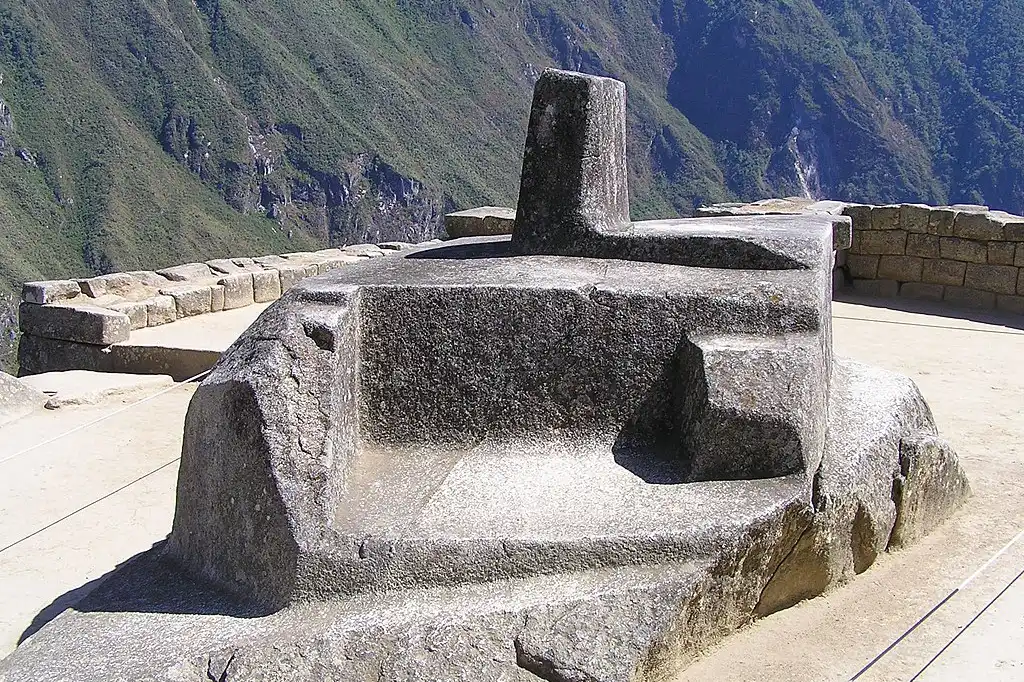
The Intihuatana Stone is one of the most mystifying and revered artifacts within Machu Picchu. Its name, often translated from Quechua as “Hitching Post of the Sun,” hints at its supposed astronomical significance. Archaeologists and historians believe that this stone was a vital tool for the Incas, potentially used for astronomical observations or as a solar calendar. This hypothesis is supported by the stone’s precise alignment with the sun’s position during the solstices and equinoxes. On these days, the sun stands directly above the pillar, creating no shadow.
In Inca cosmology, Intihuatana stones were thought to hold the sun in its place along its annual path in the sky. The Incas were accomplished astronomers, and their society was deeply intertwined with celestial movements. These stones were likely used in religious ceremonies, particularly those related to agriculture, which was central to Inca life and directly linked to solar cycles.
The Intihuatana at Machu Picchu is especially significant due to its pristine condition; many similar stones were destroyed during the Spanish conquest. It’s perched on a pyramid-like platform, offering a panoramic view of the surrounding mountains, which held great spiritual significance to the Incas. Visitors today are drawn to this spot, not only for its historical and astronomical importance but also for the sense of connection to the past and the natural world that it provides.
Explore Machu Picchu 1 day / Machu Picchu by train from Cusco
Join an exclusive small-group tour in Machu Picchu Citadel and experience one of the world's most visited sites in a very private way with a local and knowledgeable tour guide. Marvel at the beauty and mystery of this UNESCO listing.
Ultimate Machu Picchu: Trek the Salkantay trail to Machu Picchu
ULTIMATE MACHU PICCHU Trek into the Andes on this less-crowded alternative to reach Machu Picchu. Visit local markets, temples, and a coffee farm while marveling at the beautiful scenery. TRIP HIGHLIGHTS Hike up and over Salkantay Pass for breathtaking vi
2 Days Machu Picchu Tour + Hiking Machu Picchu Mountain.
Join this 2D/1N Machu Picchu and hiking to Machu Picchu Mountain tour that will take you to the ancient city of the Inkas "Machu Picchu". This tour departs from Cusco and includes the train, entrance fees, Hotel with buffet breakfast and English tour guid
Machu Picchu Sunrise Tour - 2 Days - Sacred Valley and Machu Picchu 2 Days Tour
Samextoursperu offers you the best of Perú and Machupicchu, if you are short of time but would still like to visit the enigmatic Machupicchu Inca citadel! Here you go, our 2 days Machupicchu guided tour will give you more time to explore and enjoy the bes
Visit Machu Picchu and Machu Picchu Mountain in 2 Days
Visit Machu Picchu Mountain from Cusco in 2 days. From January 02 to April 30, 2022 the train departures will be from Ollantaytambo. Itinerary: Day 1: • 06:30 Pick up from the Hotel and transfer to the San Pedro train station. • 07:00 We board the trai
Visit Machu Picchu and Machu Picchu Mountain in 1 Day
We will visit the Machu Picchu mountain and later you will visit the Inca city of Machu Picchu (Archaeological Zone). To make this tour it is necessary to book months in advance because the tickets to the Machu Picchu mountain sell out quickly. Brief Iti
FD Machu Picchu: Tour & Machu Picchu Mountain from Cusco
You will have the opportunity to be one of the 800 people with permission to climb the Machu Picchu mountain. On this tour, you will be able to visit the lost citadel of Machu Picchu and hike up Machu Picchu Mountain for incredible views from above. Admir
Machu Picchu by car 3 Days / 2 Nights + Machu Picchu Mountain
Machu Picchu by car is one of the most popular and economical alternatives to visit the Machu Picchu Sanctuary. This route counts as a great attraction the geographical biodiversity that we will find in our route towards Machu Picchu.
Temple of the Sun
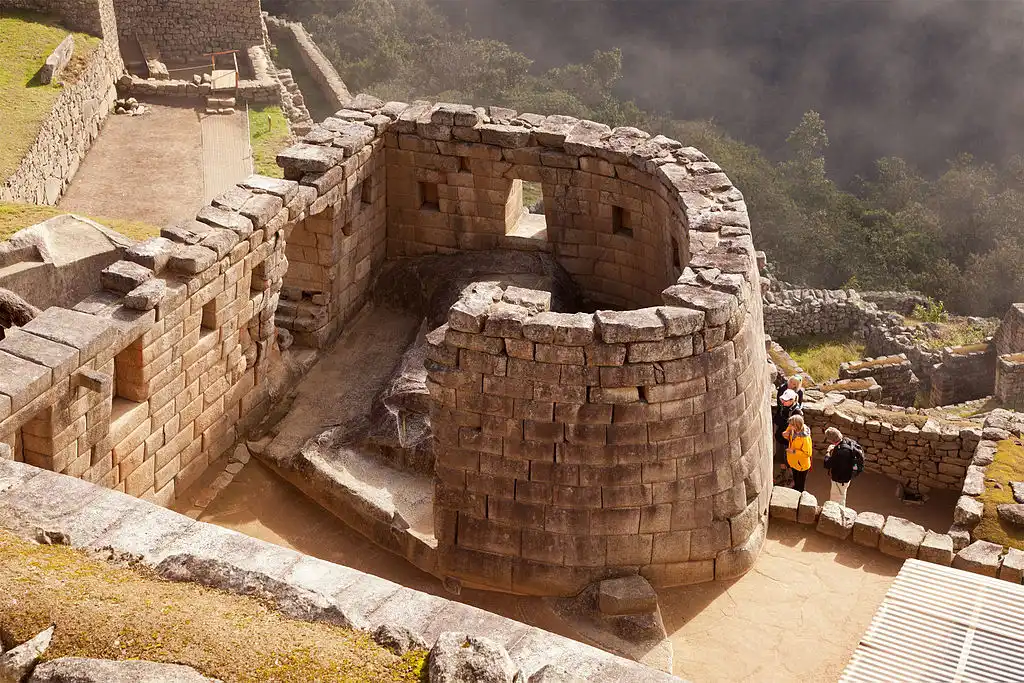
The Temple of the Sun in Machu Picchu is an architectural marvel, exemplifying the Incas’ advanced masonry skills and their deep reverence for the natural elements. This semi-circular construction is strategically built around a large rock, which becomes illuminated by the sun during the winter solstice. The alignment of the temple with the solstices highlights the Inca’s sophisticated understanding of astronomy and their ability to integrate it into their architecture.
Inside the temple, there are trapezoidal windows and niches that play with the light in fascinating ways, demonstrating the Incas’ mastery of light and shadow to create spiritual and ceremonial spaces. The temple is thought to have been a place of worship and possibly used for astronomical observations. The fine stonework and the precision of the construction suggest that it held great importance.
Below the temple lies a series of underground chambers, believed to have been used for rituals or as royal mausoleums. The connection between these chambers and the temple above strengthens the theory that this site was significant for both astronomical observation and religious ceremonies. The exact nature of the rituals performed here remains a mystery, adding to the allure and mystique of the site.
The Temple of the Sun stands as a testament to the Incas’ astronomical knowledge, architectural skill, and spiritual depth. For modern visitors, it offers a glimpse into a civilization that harmoniously blended its scientific understanding with its religious beliefs, deeply respecting and reflecting the patterns of the natural world.
Room of the Three Windows
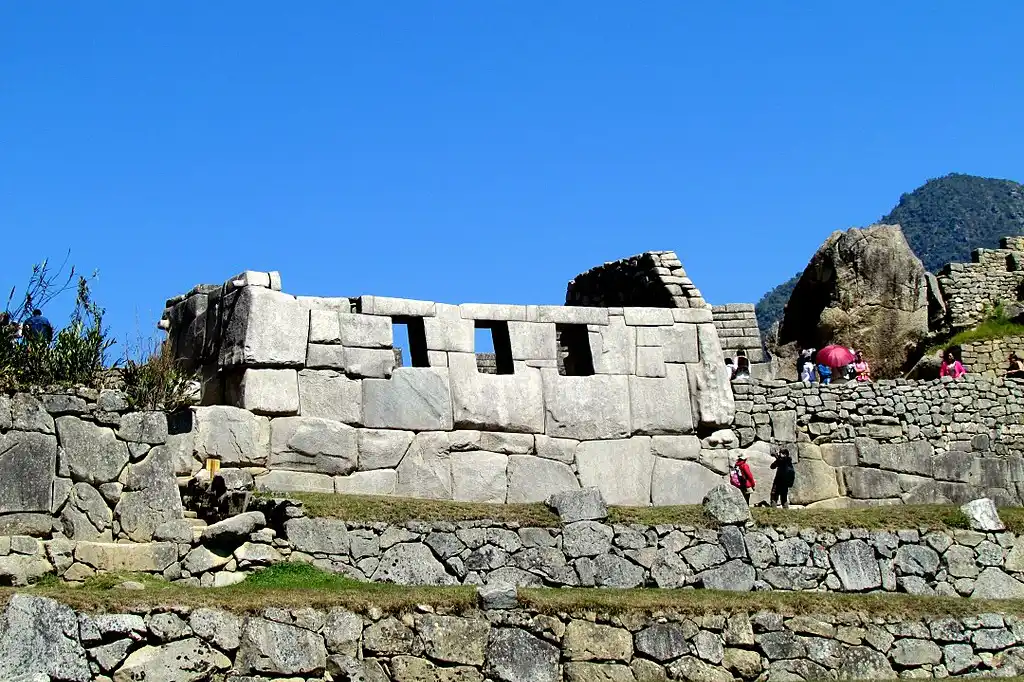
The Room of the Three Windows is a significant structure within Machu Picchu, located in the Sacred Plaza. This room stands out for its three trapezoidal windows that perfectly frame the majestic landscape beyond, symbolizing the Inca’s deep connection to the natural world. The windows are believed to be aligned with significant astronomical events, showcasing the Inca’s advanced understanding of astronomy.
The room is built with finely cut stones, fitting together without mortar, exemplifying the extraordinary craftsmanship of the Inca masons. The three windows are thought to hold symbolic significance, possibly representing the three levels of the Incan world: the sky (Hanan Pacha), the earth (Kay Pacha), and the underworld (Uku Pacha). This interpretation aligns with the Inca’s cosmological view, where architecture often mirrored and celebrated their spiritual beliefs.
The placement of the Room of the Three Windows in the Sacred Plaza, a place where important ceremonies and rituals would have taken place, further underscores its importance. It might have been used for astronomical observations or religious ceremonies, or as a place for the Inca ruler to address his people.
For tourists visiting Machu Picchu, the Room of the Three Windows is not just an architectural wonder but also a cultural symbol. It offers a moment to reflect on the Inca civilization’s sophistication, where architecture, astronomy, and religion were seamlessly intertwined. The view from the windows provides an unforgettable connection to the mystical Andean landscape, leaving a lasting impression of the ingenuity and spirituality of the Inca people.
Temple of the Condor

The Temple of the Condor at Machu Picchu is an extraordinary example of the Inca’s ability to combine natural features with their architectural designs. This temple features a large naturally occurring rock that resembles a condor in flight. The Incas, known for their reverence for nature and its elements, carved additional stones around this natural formation to enhance the semblance of a condor, a bird deeply significant in their culture.
The condor in Andean mythology represents the upper world and is a symbol of freedom and the heavens. The Incas believed that the condor carried the dead to the afterlife, making it a sacred creature. The Temple of the Condor, therefore, is thought to have been a site of great spiritual importance, possibly used for funerary rituals or as a place of worship.
Beneath the ‘wings’ of the condor, there are carved spaces that might have been used for ceremonial purposes. Some historians suggest that these could have been places for offerings or sacrifices. The temple’s location in Machu Picchu, set apart from the main squares and residential areas, supports the theory of its religious significance.
Visitors to the Temple of the Condor are often struck by the seamless integration of natural rock formations with human-made structures, a hallmark of Inca architecture. This site provides a profound insight into the spiritual life of the Incas, where nature, religion, and art converged. It serves as a powerful reminder of the deep respect the Incas had for the natural world and their ingenuity in incorporating it into their spiritual practices.
Agricultural Terraces
The agricultural terraces of Machu Picchu are a testament to the Inca’s advanced understanding of farming and environmental management. These terraces, cut into the steep mountainside, allowed the Incas to cultivate a variety of crops, overcoming the challenges of the rugged Andean terrain. The terraces not only provided food for the inhabitants of Machu Picchu but also played a crucial role in preventing soil erosion and managing water flow.
Each terrace is constructed with a layer of large stones for drainage, a layer of smaller stones, and finally, a layer of topsoil, where the crops were planted. This sophisticated layering system ensured that the soil remained fertile and that water from the frequent rains was efficiently drained, preventing damage to the crops and structures below.
The agricultural terraces also had a symbolic significance, representing the Inca’s mastery over nature and their ability to harmonize with their environment. They cultivated crops such as maize, potatoes, and quinoa, which were staples of their diet. The terraces’ alignment with the sun and the wind patterns also highlights their understanding of the climatic conditions and their impact on agriculture.
For modern visitors, the terraces offer a stunning view of the Inca’s ingenuity and their sustainable approach to agriculture. The sight of these terraces, following the natural contours of the mountainside and blending into the landscape, is not only visually striking but also evokes a sense of awe at the Inca’s ability to adapt and thrive in challenging environments. The agricultural terraces of Machu Picchu are a living example of ancient wisdom in land use and environmental stewardship, still relevant in today’s context of sustainable agriculture and ecological balance.
Explore Machu Picchu 1 day / Machu Picchu by train from Cusco
Join an exclusive small-group tour in Machu Picchu Citadel and experience one of the world's most visited sites in a very private way with a local and knowledgeable tour guide. Marvel at the beauty and mystery of this UNESCO listing.
Ultimate Machu Picchu: Trek the Salkantay trail to Machu Picchu
ULTIMATE MACHU PICCHU Trek into the Andes on this less-crowded alternative to reach Machu Picchu. Visit local markets, temples, and a coffee farm while marveling at the beautiful scenery. TRIP HIGHLIGHTS Hike up and over Salkantay Pass for breathtaking vi
2 Days Machu Picchu Tour + Hiking Machu Picchu Mountain.
Join this 2D/1N Machu Picchu and hiking to Machu Picchu Mountain tour that will take you to the ancient city of the Inkas "Machu Picchu". This tour departs from Cusco and includes the train, entrance fees, Hotel with buffet breakfast and English tour guid
Machu Picchu Sunrise Tour - 2 Days - Sacred Valley and Machu Picchu 2 Days Tour
Samextoursperu offers you the best of Perú and Machupicchu, if you are short of time but would still like to visit the enigmatic Machupicchu Inca citadel! Here you go, our 2 days Machupicchu guided tour will give you more time to explore and enjoy the bes
Visit Machu Picchu and Machu Picchu Mountain in 2 Days
Visit Machu Picchu Mountain from Cusco in 2 days. From January 02 to April 30, 2022 the train departures will be from Ollantaytambo. Itinerary: Day 1: • 06:30 Pick up from the Hotel and transfer to the San Pedro train station. • 07:00 We board the trai
Visit Machu Picchu and Machu Picchu Mountain in 1 Day
We will visit the Machu Picchu mountain and later you will visit the Inca city of Machu Picchu (Archaeological Zone). To make this tour it is necessary to book months in advance because the tickets to the Machu Picchu mountain sell out quickly. Brief Iti
FD Machu Picchu: Tour & Machu Picchu Mountain from Cusco
You will have the opportunity to be one of the 800 people with permission to climb the Machu Picchu mountain. On this tour, you will be able to visit the lost citadel of Machu Picchu and hike up Machu Picchu Mountain for incredible views from above. Admir
Machu Picchu by car 3 Days / 2 Nights + Machu Picchu Mountain
Machu Picchu by car is one of the most popular and economical alternatives to visit the Machu Picchu Sanctuary. This route counts as a great attraction the geographical biodiversity that we will find in our route towards Machu Picchu.
Visiting Time & Tickets
| Factor | Details |
|---|---|
| Best Time to Visit | – Dry Season (May to October): Offers clearer skies and less rain, ideal for hiking and photography. However, it’s also the busiest period, especially from June to August. Wet Season (November to April): Fewer tourists and greener landscapes, but with higher chances of rain and occasional fog. Some trails might be closed for maintenance, especially in February. |
| Ticket Charges | General Admission: Around $47 (Adults), $24 (Students with valid ISIC card), Free for children under 8. Machu Picchu + Huayna Picchu: About $62 (Adults), $37 (Students), includes access to Huayna Picchu mountain. Machu Picchu + Machu Picchu Mountain: Approximately $62 (Adults), $37 (Students), includes access to Machu Picchu mountain. Afternoon Ticket (1 PM onwards): Roughly $45 (Adults), $22 (Students). Museum Ticket: Additional $7 (optional). |
Travel Tips
Traveling to Machu Picchu is an unforgettable experience, but it requires some preparation to make the most of your visit. Here are some essential travel tips:
- Best Time to Visit: The dry season from May to September is ideal, with less rain and clearer skies. However, these months can be more crowded.
- Acclimatization: Machu Picchu is at a high altitude. Spend a few days in Cusco or the Sacred Valley to acclimatize and avoid altitude sickness.
- Tickets and Entry: Purchase your tickets in advance, as entry to Machu Picchu is limited and can sell out quickly. Consider buying a ticket that includes access to Huayna Picchu or Machu Picchu Mountain for a more comprehensive experience.
- Guided Tours: Hiring a knowledgeable guide can greatly enhance your experience, offering insights into the history and significance of the site.
- What to Bring: Wear comfortable walking shoes, bring water, sunscreen, insect repellent, and a hat. The weather can change quickly, so pack a rain jacket and layers.
- Respect the Rules: Follow all site regulations, stay on marked paths, and don’t touch or climb on the ruins. Machu Picchu is a UNESCO World Heritage site and a sacred place.
- Photography: Bring a camera, but drones and tripods are not allowed without special permission.
- Arriving at Machu Picchu: You can hike the Inca Trail, take a train to Aguas Calientes and then a bus up to Machu Picchu. Plan your transportation in advance.
- Stay Hydrated: Drink plenty of water to stay hydrated, but remember that bathrooms are only at the entrance.
- Sustainable Tourism: Respect the local culture and environment. Buy local products and use services that support sustainable tourism.
- Health and Safety: Keep your belongings secure and stay aware of your surroundings. If you have health issues, consult with your doctor before the trip.
- Early Morning Visit: Arrive early to avoid crowds and to see the site in the softer light of morning.
By following these tips, you can ensure a more enjoyable and respectful visit to this magnificent historical site.
For the best experience, it’s recommended to visit early in the morning or later in the afternoon to avoid the peak crowds. Hiring a knowledgeable guide can enrich the experience, offering insights into the history and theories surrounding this mysterious place. Remember to respect the site by following designated paths and regulations, as Machu Picchu is not only a UNESCO World Heritage site but also a sacred place for many.
Frequently Asked Questions about Visiting Machu Picchu
Q: Do I need a permit to visit Machu Picchu?
A: Yes, you need a ticket to enter Machu Picchu. It’s advisable to purchase your ticket in advance as there’s a daily limit on the number of visitors.
Q: How do I get to Machu Picchu?
A: The most common way to reach Machu Picchu is by train to Aguas Calientes, the nearest town, followed by a bus ride to the site. Alternatively, you can hike the Inca Trail, which requires a separate permit.
Q: What is the best time of year to visit Machu Picchu?
A: The best time to visit is during the dry season, from May to September. However, these months can be quite crowded. The weather is generally clearer, offering better views.
Q: Is altitude sickness a concern in Machu Picchu?
A: Yes, altitude sickness can be a concern. Machu Picchu is at 2,430 meters above sea level. It’s recommended to acclimatize in Cusco or the Sacred Valley for a couple of days before visiting.
Q: Are there guided tours available at Machu Picchu?
A: Yes, there are many guided tours available. Guides can provide valuable insights into the history and architecture of the site.
Q: Can I stay overnight at Machu Picchu?
A: No, overnight stays are not allowed at Machu Picchu. However, there are accommodations in Aguas Calientes.
Q: What should I bring to Machu Picchu?
A: Bring water, sunscreen, insect repellent, a hat, and wear comfortable walking shoes. Also, pack a rain jacket as the weather can change suddenly.
Q: Are there any restrictions on photography at Machu Picchu?
A: Photography for personal use is allowed, but tripods, drones, and professional photography equipment require special permission.
Q: Is there a limit to how long I can stay at Machu Picchu?
A: Yes, your ticket allows a limited time slot for visiting, which helps manage the number of people and reduce impact on the site.
Q: What is the situation with food and restrooms at Machu Picchu?
A: There are no food services inside Machu Picchu, and it’s advised to bring snacks. Bathrooms are located outside the entrance, so plan accordingly.
Q: Is Machu Picchu accessible for visitors with disabilities?
A: Machu Picchu has some accessibility challenges due to its terrain. There are some areas accessible with assistance, but it’s best to check current conditions and facilities in advance.
Q: Can I visit Machu Picchu independently, or do I need to be part of a tour?
A: You can visit Machu Picchu independently, but having a guide can enrich your experience. Whether you go alone or in a group, you still need to adhere to the paths and rules set by the site management.















